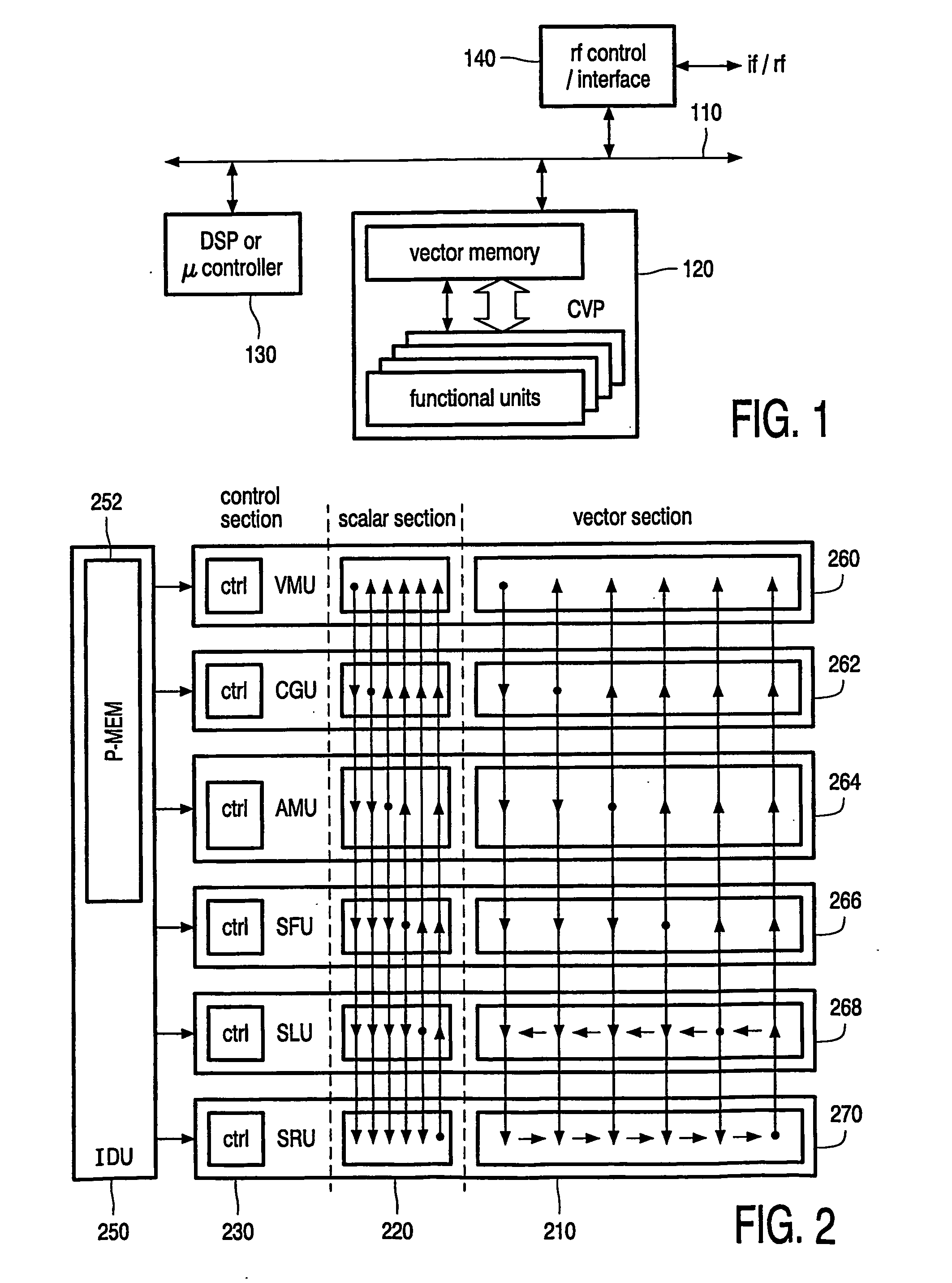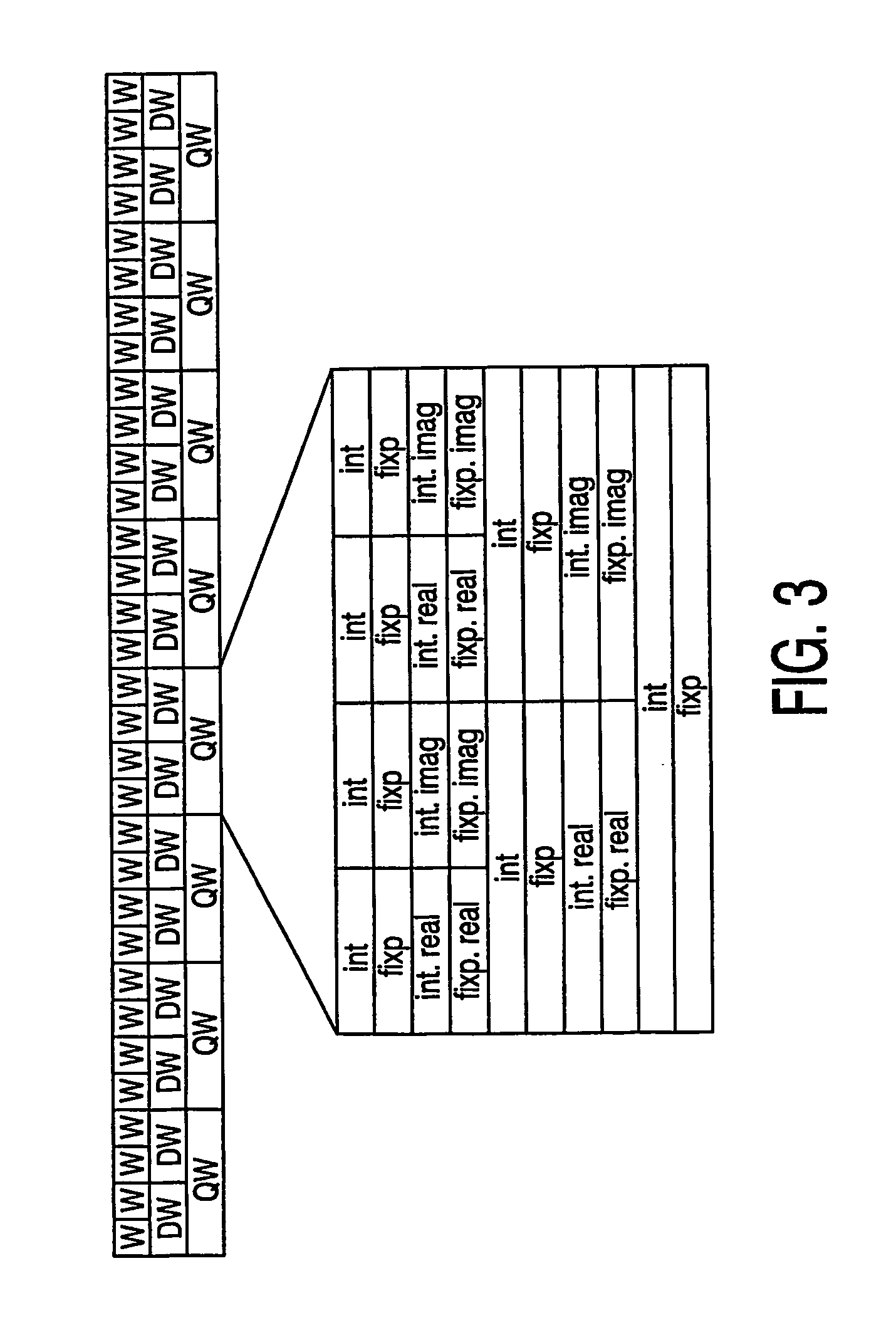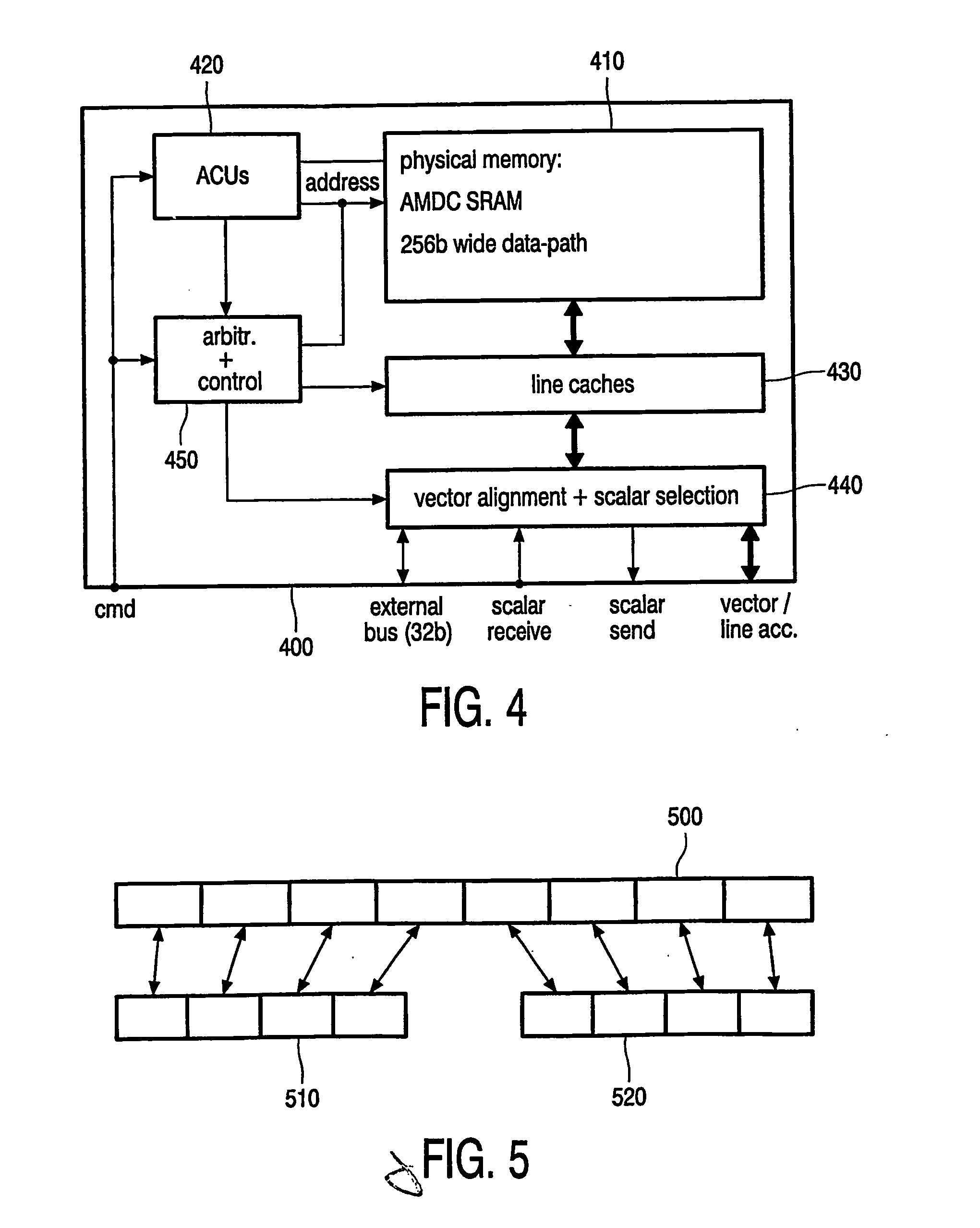Address generation unit for a processor
a technology of address generation unit and processor, which is applied in the direction of memory address formation, micro-instruction address formation, instruments, etc., can solve the problems of ineffective conventional vector processor architecture for applications that are not 100%, and no speedup of this part of the code, etc., to achieve the effect of better suitabl
- Summary
- Abstract
- Description
- Claims
- Application Information
AI Technical Summary
Benefits of technology
Problems solved by technology
Method used
Image
Examples
Embodiment Construction
[0022] The address generation unit (AGU) and memory unit are preferably used in a processor optimized for signal processing. Such a processor may be a DSP or any other suitable processor / micro-controller. The remainder of the description describes using the units in a highly powerful scalar / vector processor. Such a processor may be used stand-alone or in combination with another processor. FIG. 1 shows a preferred configuration in which the scalar / vector processor may be used. In this configuration, three main components are connected via a bus 110. The bus 110 connecting these three components may be any suitable bus, for example an AMBA High-speed Bus (AHB). The main components are: [0023] the programmable scalar / vector processor 120 comprising functional units and a local data memory (referred to as vector memory in FIG. 1), [0024] a micro-controller or DSP subsystem 130, including limited on-chip program and data memory; an interface block 140.
[0025] The scalar / vector processor...
PUM
 Login to View More
Login to View More Abstract
Description
Claims
Application Information
 Login to View More
Login to View More - R&D
- Intellectual Property
- Life Sciences
- Materials
- Tech Scout
- Unparalleled Data Quality
- Higher Quality Content
- 60% Fewer Hallucinations
Browse by: Latest US Patents, China's latest patents, Technical Efficacy Thesaurus, Application Domain, Technology Topic, Popular Technical Reports.
© 2025 PatSnap. All rights reserved.Legal|Privacy policy|Modern Slavery Act Transparency Statement|Sitemap|About US| Contact US: help@patsnap.com



